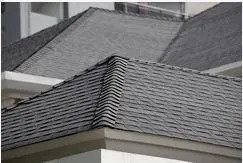Rubber Roofing
Our professional rubber roofing service ensures that you enjoy the maximum benefit of your rubber roofing investment because it was properly installed by expert rubber roofing specialists
Rubber Roof
The rubber roofing is useful in many different areas because it’s durable and waterproof. Rubber roof is often used for low-income housing projects, sporting arenas, car parks or campsites and warehouses but they’re also popular among military personnel to cover tent platforms when deployed due to their durability as well as the protection from rain that a fireproof material provides. The downside is that this type of roof requires special skills such as silicone sealant installation which can be an issue considering these materials tend not to have appealing aesthetics like shingle does on any given house.
Rubber roofs are designed to resist tearing, perforation and aging. Although they can last for a period of up to 20 years or more, some roofing materials have shorter lifespans such as PVC which lasts an average between 15-20 years.
The materials used in roofing are diverse and come with a few advantages. The main advantage of these roofing material types is that they will not create holes when it snows heavily, unlike metal or wood shingle roofs. They also do not require annual maintenance which can be costly for other kinds of roofs like steel or slate; however leaks may still happen due to its porous nature so constant vigilance as well as inspections from time to time should take place. One disadvantage includes the limited life span (that’s why some prefer using them just for low-income housing projects). High installation costs and high material cost are another downside but most people don’t mind because their color selection has an impressive range too!
One of the best advantages that rubber roofing has is its longevity. Rubber roofs have an average lifespan of 30-50 years, whereas asphalt or metal roofs can only last for about 10 to 15 years before they need new installation.
The main advantage with roofing rubber is that it’s cheaper than other materials in both long and short terms; when you consider how much more affordable these products are over time due to their extended life span (which saves money down the line), as well as being less expensive at first because there will be no costly repairs needed soon after initial installation like what might happen if one had installed a different option such as ceramic tiles which would eventually require sealing cracks multiple times during said product’s lifetime. These considerations make rubber roofing a good roof option.
EPDM Rubber Roof

An EPDM roof is a type of rubber roof that’s made with Ethylene Propylene Diene Monomer. This material doesn’t need to be replaced as often and can withstand extreme weather conditions like snow or hail easily! What problems occur in this type of roof? When it does get damaged, the best way to repair it would be to use an adhesive tape which will stop water from seeping through.
EPDM rubber was introduced into use by NASA for sealing off all joints that could lead to air leaks in the space shuttle. The EPDM roof is made up of a rubber and plastic material that’s stretched across the substrate. This type of roofing typically requires minimal maintenance, with only occasional spot repair needed in areas where there has been damage to the surface or tears develop over time. Firestone EPDM rubber roofing is the most famous manufacturer we install.
EPDM roofs are great because they’re durable and long-lasting – if you have damage on your EPDM roof all you really need to do is remove any debris that could be restricting water flow from evaporating or being absorbed into the surface (which will lead to more problems for future residents).
This type of roof is considered a foam rubber product which means it’s not as durable or resistant to environmental factors such as sun damage from UV rays. The material will need repairs if there are any pealing spots that have become porous or brittle due to the sun.
The material is made of polymers which are sensitive to extreme heat and cold – if you’re in an area where the temperature fluctuates a lot, it’s important to make sure that your roof can withstand these changes as well so repairs will be needed periodically.
EPDM roofing is actually quite common among new construction homes nowadays because it has become more popular over rubberized asphalt shingle (RAS) due to its high resistance against hail and storms.
EPDM roofing is a synthetic rubber material that can be used in both commercial and residential applications. It’s an environmentally friendly, energy efficient choice for many homeowners because it heats up quickly to keep your home cool during hot days while also providing you with insulation during the winter months.
Managing complex commercial roofing projects is simplified with having the right team and streamlined processes, in additional to regular monitoring and improvement. Count on us.